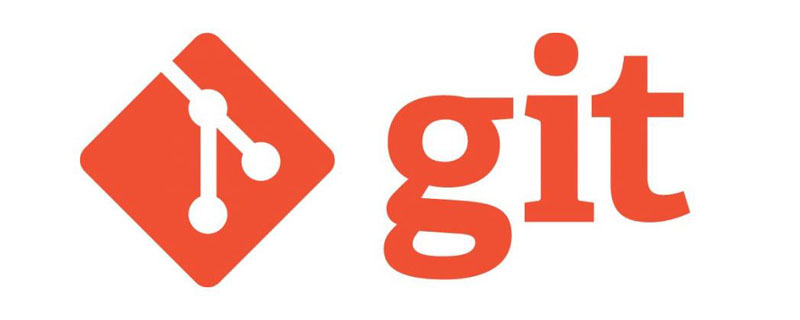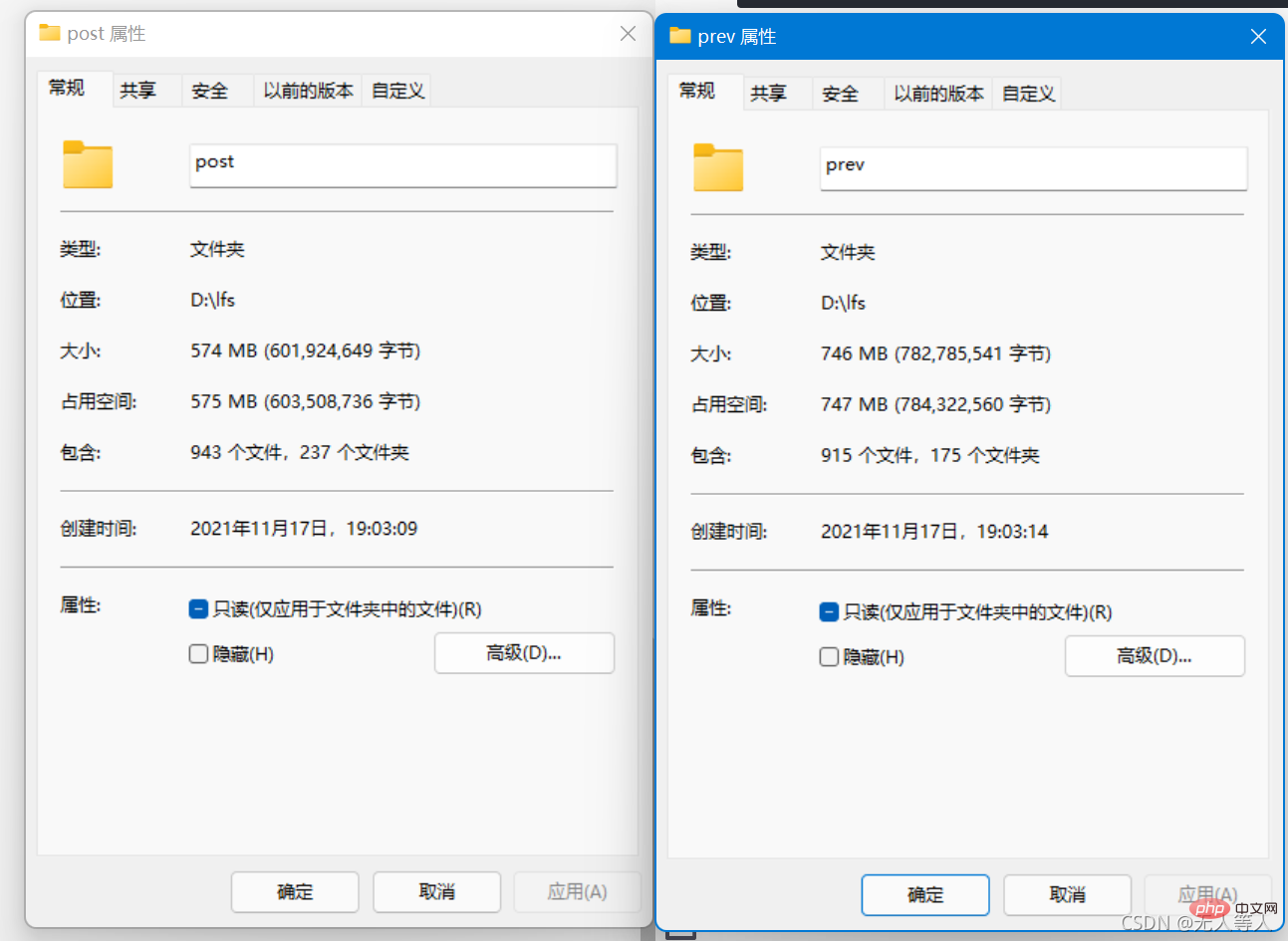GIT LFS migration instructions (detailed examples)
This article brings you relevant knowledge about Git, which mainly introduces issues related to GIT LFS, including GIT LFS server configuration, GIT LFS client installation, and migration of local history. Warehouse, etc. I hope this helps everyone.

Recommended study: "Git Learning Tutorial"
Previously, I found that jenkins git clone failed when using CI/CD on some git projects. Setting the depth and clone time has no effect. We can only consider strategies such as warehouse downsizing. It was found that the warehouse has a lot of binary files, and these binary files change quite frequently. This operation will cause the git warehouse to grow exponentially and expand rapidly. Git itself is only suitable for managing text files.
Let me tell you another interesting past story. I once had a colleague who was into graphics programming. The source code of this language was in the form of pictures, and the file was very large. I had to use git to manage it. Small company projects changed frequently, which resulted in no How long did it take for the company's internal git server hard disk to be filled up by several of his git warehouses?
GIT LFS (Large File Storage)
Although git has never been suitable for managing binary files, git now seems to provide git lfs, a plug-in specifically for managing large files, by default.
The basic principle is simply to use a file pointer (text) instead of actual file storage. Git only stores the change history of the file pointer instead of the entire binary file, and automatically provides hooks when used. This is convenient for operations such as clone, pull, reset, etc. to automatically obtain the source binary files of these file pointers. Similarly, when updating the binary file commit, git will automatically convert the source file into a file pointer and enter it into git log, and at the same time, the source file will be uploaded to lfs. So at the user level, the use of GIT LFS is actually senseless.
Migration
The above briefly introduces GIT LFS, and then we will directly talk about how to migrate. As for why we talk about migration directly instead of how to use LFS from scratch.
This is because often when using the git warehouse, you find that the warehouse is very big and clone is very slow, and then you think about using LFS.
Migration requires us to have administrator rights of the warehouse, and to unprotect protected branches;
The specific LFS migration is mainly divided into the following steps.
It is best to make a backup before migrating and communicate well with team colleagues. After all, the operation involves -f high-risk operations, and it is easy to take the blame.
GIT LFS server configuration
If you build some self-built git services, you may need to enable LFS on the server side, such as gitlab.
GIT LFS client installation
The git installation package for windows comes with this plug-in. No additional installation is required. Other platforms can install it themselves and link.
Try the following commands on the command line.
git lfs
If there is information output similar to the help document, it means there is already a git lfs client.
git-lfs/2.11.0 (GitHub; windows amd64; go 1.14.2; git 48b28d97)git lfs <command> [<args>]Git LFS is a system for managing and versioning large files in association with a Git repository. Instead of storing the large files within the Git repository as blobs, Git LFS stores special "pointer files" in the repository, while storing the actual file contents on a Git LFS server. The contents of the large file are downloaded automatically when needed, for example when a Git branch containing the large file is checked out.Git LFS works by using a "smudge" filter to look up the large file contents based on the pointer file, and a "clean" filter to create a new version of the pointer file when the large file's contents change.It also uses a pre-push hook to upload the large file contents to the Git LFS server whenever a commit containing a new large file version is about to be pushed to the corresponding Git server.</args></command>
Then you need to execute the following command to configure the LFS global environment. It only needs to be configured once, and the hooks of the current warehouse will also be updated.
git lfs install
Migrate local history warehouse
The basic idea of lfs migration: lfs rewrites the local history—>force push overwrites the remote end to achieve the migration effect.
So we'd better synchronize the local warehouse with the remote one, and create local branches for all remote branches;
Then cd to your local warehouse and execute the following command, -include contains the glob expression, Add the file name you want LFS to manage by yourself, –everything represents all local branches
git lfs migrate import --include="*.bin,*.lib,*.so,*.dll,*.a,*.param,*.zip,*.gz" --everything
migrate: Sorting commits: ..., done. migrate: Rewriting commits: 100% (193/193), done. develop bacb490a80ea46d73bd3866c2e7cf7ad199ce5eb -> 72884bcb4629417bad73ea3d485d08a0708909cd feature/npu-platform a3645632756becc527c7f4d58514b3c479f824d3 -> e227900a3903b3a6955e4dffee48daeceac6cdff master 1ccdecdcb4b5d6224a6e24c6f87793bfcc15ee4c -> 1d9fc2139600ef3d92a20d65bb5db89021b8c488 0.1.0 07c6b2aa732506f1cc88cedb551f37f376b6efa6 -> 8e55193221dfca9f6bb28ccd9cca85af9c5958c9 1.0.0 0f694efcd7aa9df641836e1ea6eebbb730b940b5 -> 3f9e77575120b6e56b34790c998a362116da75f5 migrate: Updating refs: ..., done.
After rewriting local branches, tags, etc.,
We can execute git lfs here first ls-filesCheck which files have been converted to lfs management and check if there are any omissions
At this time, no matter which branch you are on, the .gitattributes file will appear and will be added. Something similar to the following.
*.bin filter=lfs diff=lfs merge=lfs -text *.lib filter=lfs diff=lfs merge=lfs -text *.so filter=lfs diff=lfs merge=lfs -text *.dll filter=lfs diff=lfs merge=lfs -text *.a filter=lfs diff=lfs merge=lfs -text *.param filter=lfs diff=lfs merge=lfs -text *.zip filter=lfs diff=lfs merge=lfs -text *.gz filter=lfs diff=lfs merge=lfs -text
At the same time, you can see that all our binary files have been converted into the following form of text
version https://git-lfs.github.com/spec/v1 oid sha256:9171c8350d72ccca6ad60ac80b577157ad1f9fd44ca05744216e02ccbfcdf491 size 10260
Confirm that it is correct, and then it can be pushed to the remote end;
Since the migration of lfs will be rewritten All commits, and the hash value is modified, so we need to add –froce
This step requires canceling the protected branch (protected branches cannot be -f)
git push --force --all
In this way, the lfs migration of the remote warehouse is completed
迁移一些补充说明
- 迁移者的本地仓库lfs文件转源文件:经过以上步骤,由于我们将所有文件都已经转成文件指针,我们需要将文件下载回来才能正常使用该仓库。
需要注意,其他人重新clone 或者同步 lfs迁移过的remote仓库 是不需要该步,只针对迁移作者本地的仓库。
git lfs pull
- 团队中其他成员迁移前的本地仓库同步: 由于远程仓库的历史已经被全部重写,所以无法直接同步,最好是删除本地分支,重新拉取远程分支,如果本地已经有部分commit需要提交,可以重名本地分支,拉取远程再做cherry pick。git tag 同理,删除迁移前的tag。
- 本地仓库清理:上面的迁移成功将二进制文件迁移成git lfs 对象,git log 也不在存储源文件文件变更而是指针变更,但是在本地.git文件夹中仍存在之前不再需要的git log 缓存,执行以下命令做清理。
git reflog expire --expire-unreachable=now --all git gc --prune=now
清理前后仓库对比
lfs直观来讲更多的是针对仓库大clone慢的问题,我这边lfs迁移前后各备份各一个小型远程仓库做测试,
用的测试仓库二进制文件比较小,总大50m内,且变更次数也在个位数。
clone下来的仓库大小对比。
和我预估差不多,总的来说更适合二进制文件频繁变更,如果单纯是文件大,但文件不变更的话,在clone的时候区别不大,毕竟lfs在clone仍有下载源文件的步骤,除开下载,操作文件指针对git来说理论仍会有性能提升,但是可能感知不强。 推荐学习:《Git教程》
推荐学习:《Git教程》
The above is the detailed content of GIT LFS migration instructions (detailed examples). For more information, please follow other related articles on the PHP Chinese website!

Hot AI Tools

Undresser.AI Undress
AI-powered app for creating realistic nude photos

AI Clothes Remover
Online AI tool for removing clothes from photos.

Undress AI Tool
Undress images for free

Clothoff.io
AI clothes remover

Video Face Swap
Swap faces in any video effortlessly with our completely free AI face swap tool!

Hot Article

Hot Tools

Notepad++7.3.1
Easy-to-use and free code editor

SublimeText3 Chinese version
Chinese version, very easy to use

Zend Studio 13.0.1
Powerful PHP integrated development environment

Dreamweaver CS6
Visual web development tools

SublimeText3 Mac version
God-level code editing software (SublimeText3)

Hot Topics
 1386
1386
 52
52
 How to delete a repository by git
Apr 17, 2025 pm 04:03 PM
How to delete a repository by git
Apr 17, 2025 pm 04:03 PM
To delete a Git repository, follow these steps: Confirm the repository you want to delete. Local deletion of repository: Use the rm -rf command to delete its folder. Remotely delete a warehouse: Navigate to the warehouse settings, find the "Delete Warehouse" option, and confirm the operation.
 How to download git projects to local
Apr 17, 2025 pm 04:36 PM
How to download git projects to local
Apr 17, 2025 pm 04:36 PM
To download projects locally via Git, follow these steps: Install Git. Navigate to the project directory. cloning the remote repository using the following command: git clone https://github.com/username/repository-name.git
 What to do if the git download is not active
Apr 17, 2025 pm 04:54 PM
What to do if the git download is not active
Apr 17, 2025 pm 04:54 PM
Resolve: When Git download speed is slow, you can take the following steps: Check the network connection and try to switch the connection method. Optimize Git configuration: Increase the POST buffer size (git config --global http.postBuffer 524288000), and reduce the low-speed limit (git config --global http.lowSpeedLimit 1000). Use a Git proxy (such as git-proxy or git-lfs-proxy). Try using a different Git client (such as Sourcetree or Github Desktop). Check for fire protection
 How to generate ssh keys in git
Apr 17, 2025 pm 01:36 PM
How to generate ssh keys in git
Apr 17, 2025 pm 01:36 PM
In order to securely connect to a remote Git server, an SSH key containing both public and private keys needs to be generated. The steps to generate an SSH key are as follows: Open the terminal and enter the command ssh-keygen -t rsa -b 4096. Select the key saving location. Enter a password phrase to protect the private key. Copy the public key to the remote server. Save the private key properly because it is the credentials for accessing the account.
 How to connect to the public network of git server
Apr 17, 2025 pm 02:27 PM
How to connect to the public network of git server
Apr 17, 2025 pm 02:27 PM
Connecting a Git server to the public network includes five steps: 1. Set up the public IP address; 2. Open the firewall port (22, 9418, 80/443); 3. Configure SSH access (generate key pairs, create users); 4. Configure HTTP/HTTPS access (install servers, configure permissions); 5. Test the connection (using SSH client or Git commands).
 How to add public keys to git account
Apr 17, 2025 pm 02:42 PM
How to add public keys to git account
Apr 17, 2025 pm 02:42 PM
How to add a public key to a Git account? Step: Generate an SSH key pair. Copy the public key. Add a public key in GitLab or GitHub. Test the SSH connection.
 How to update code in git
Apr 17, 2025 pm 04:45 PM
How to update code in git
Apr 17, 2025 pm 04:45 PM
Steps to update git code: Check out code: git clone https://github.com/username/repo.git Get the latest changes: git fetch merge changes: git merge origin/master push changes (optional): git push origin master
 How to solve the efficient search problem in PHP projects? Typesense helps you achieve it!
Apr 17, 2025 pm 08:15 PM
How to solve the efficient search problem in PHP projects? Typesense helps you achieve it!
Apr 17, 2025 pm 08:15 PM
When developing an e-commerce website, I encountered a difficult problem: How to achieve efficient search functions in large amounts of product data? Traditional database searches are inefficient and have poor user experience. After some research, I discovered the search engine Typesense and solved this problem through its official PHP client typesense/typesense-php, which greatly improved the search performance.




